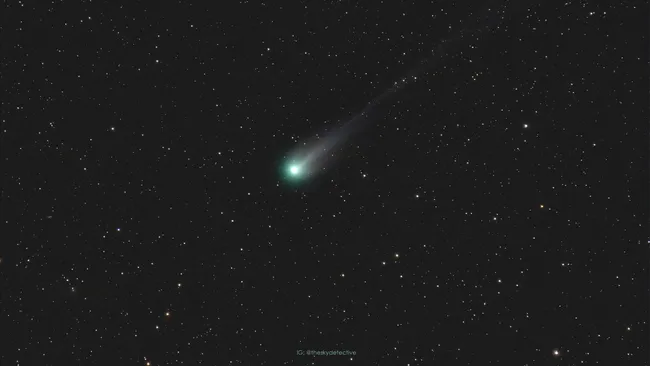Comet 12P/Pons-Brooks, also known as the “Devil’s Comet,” has attracted observers’ attention in recent months with its spectacular appearance and bright flashes. On April 21, the comet will be at perihelion, the shortest distance from the Sun. Will he survive this encounter?
The chances that the comet will not crash are encouraging. It will pass perihelion at a distance of approximately 116.8 million kilometers from the Sun, which is equivalent to about three-quarters of the distance from the Earth to the Sun. “The Devil’s Comet” orbits the Sun in about 71 years, and previous encounters had not led to its destruction. Meteorologist and astronomer Joe Rao emphasized that there is no point in expecting any disaster this time.
The only negative point is that after the comet passes the Sun, it will quickly disappear from the field of view of observers in the Northern Hemisphere, becoming observable only from the Earth’s Southern Hemisphere. Comets usually reach their maximum brightness within a few weeks after perihelion, gradually dimming as they move away from the Sun.
We still have a chance to see the “Devil’s Comet” in the northern sky before it disappears completely. According to Rao’s predictions, its brightness will drop to the 6th or 7th magnitude by the end of May and to the 8th or 9th magnitude by the end of June. Residents of the Southern Hemisphere can now begin to observe it in the southern sky.
The comet will continue its journey through the solar system after perihelion on April 21, and the next time it will return to our sky is expected only in 2095. Not all comets survive their approach to the Sun. Approaching the Sun at a distance closer than Mercury (58 million kilometers) could cause their extinction.
Most comets spend most of their time in the outer regions of the solar system, where temperatures are much colder, between -184 and -240 degrees Celsius. As they approach our star, their temperatures rise rapidly and a significant heat load occurs. However, the distance of Comet 12P/Pons-Brooks from the Sun allows catastrophic scenarios to be prevented.













